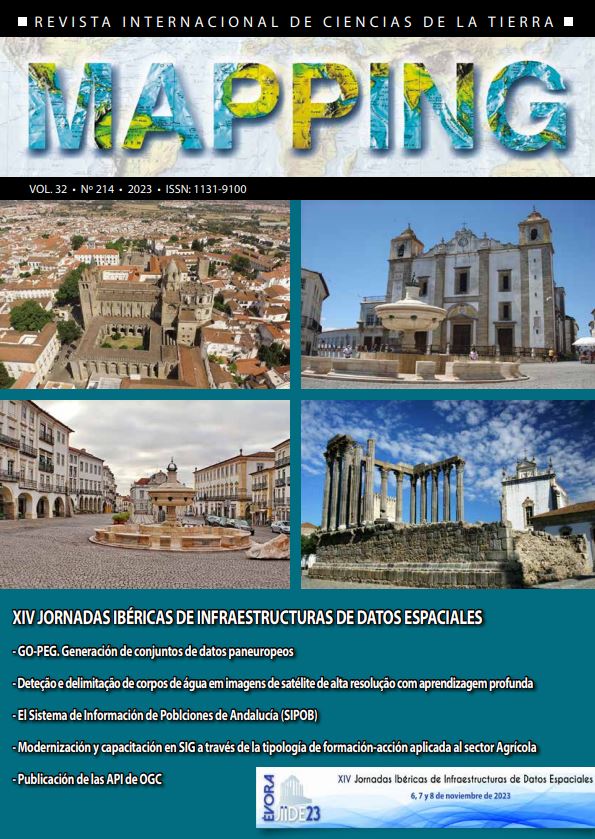Pan-European dataset generation
Use case for emergencies
DOI:
https://doi.org/10.59192/mapping.440Keywords:
GO-PEG, Emergencies, Population, PostGIS, FAIR princi`les, High value dataAbstract
The GO-PEG project is a research project funded by the European Commission, which has been carried out between 2019 and 2023. Its goal is to provide access to harmonized thematic datasets and their corresponding metadata in the areas of the environment, emergencies, and management. A specific use case, known as POPIMPACT, will be presented within the framework of GO-PEG. In this context, a high-value dataset has been generated to identify the population in each building of an area affected by an emergency, documenting lessons learned and best practices. A methodology is established in PostGIS using various functions to harmonize the information and assign the population based on different selectable methods (building footprint, volume, and residential area). The results are validated using the FAIR principles and are published through the OGC API in the European Metadata Catalog.
Downloads
References
Gálvez-Salinas, J.A.; Fischer, J. and Valenzuela-Montes, L.M. (2013): ”Methodology for the spatial disaggregation of demographic information in urban areas through the development of modifiable spatial units”. GeoFocus, Vol. 13 (no. 1), pp. 337-366.
Mora-García, R. and Marti-Ciriquian, P. (2015): ”Desagregación poblacional a partir de datos catastrales”, in de la Riva, J., I. de la Riva, J. (2015).la Riva, J., Ibarra, P., Montorio, R., Rodrigues, M. (Eds.) 2015: Spatial analysis and geographica representation: innovation and application. University of Zaragoza and AGE, pp. 305-314. XIV Congress of the Association of Spanish Geographers, 28-30 October, Zaragoza. Spatial analysis and geographical representation: innovation and application https://www.academia.edu/1007842/Mapping_population_distribution_in_the_urban_environment_the_cadastral_based_expert_dasymetric_system_CEDS_
Downloads
Published
How to Cite
Issue
Section
License
Copyright (c) 2023 Revista MAPPING

This work is licensed under a Creative Commons Attribution-NonCommercial-NoDerivatives 4.0 International License.





